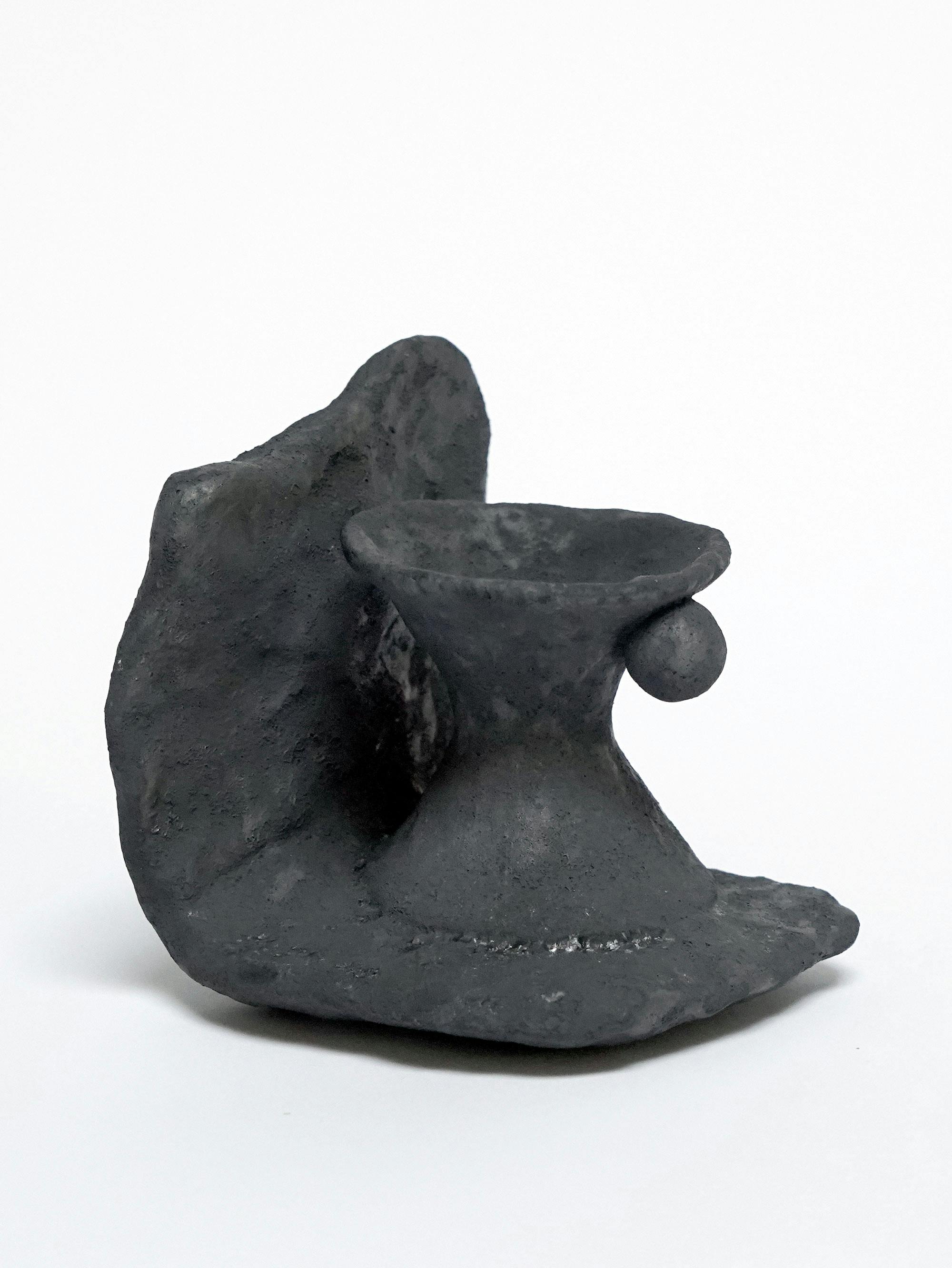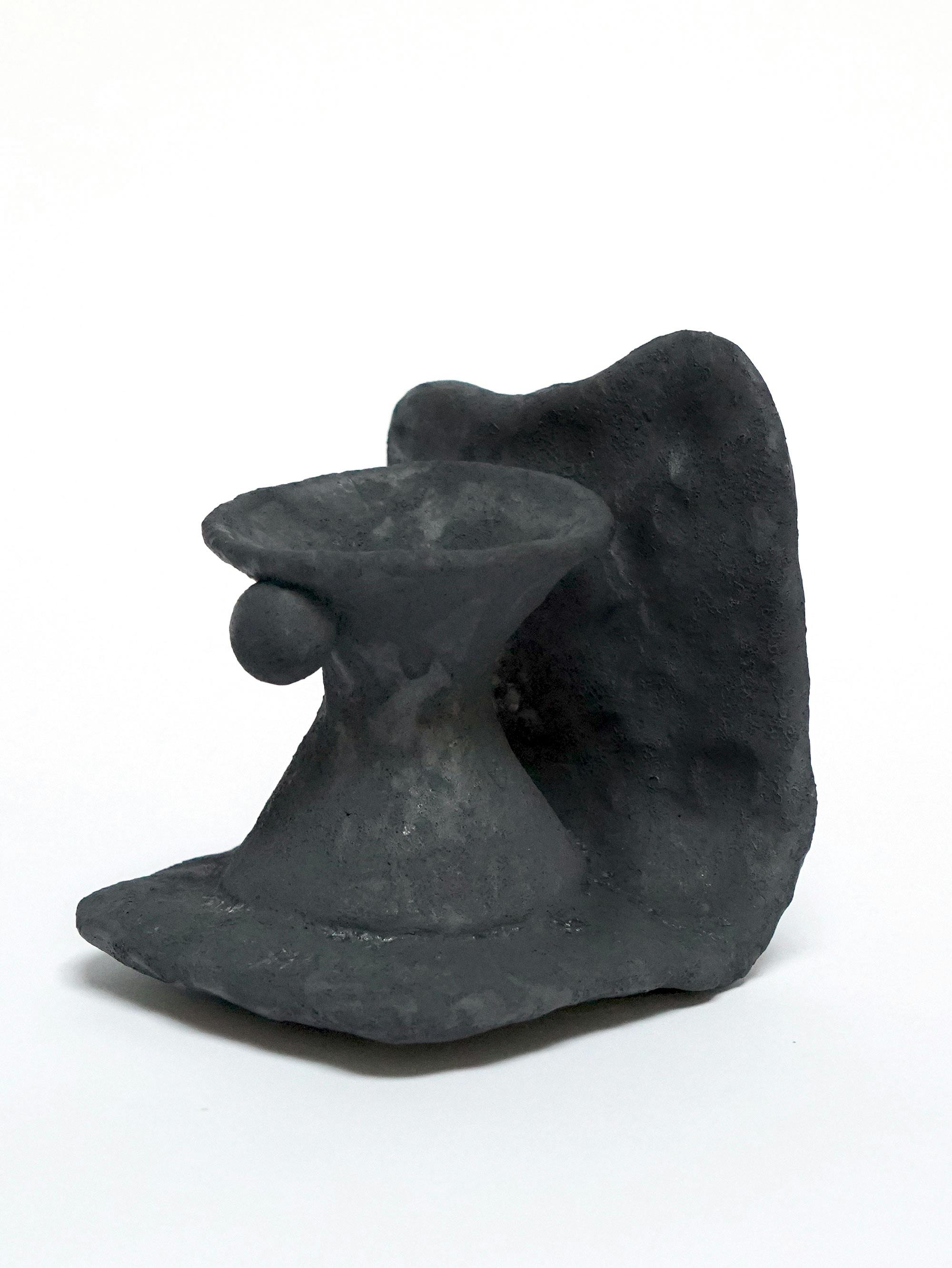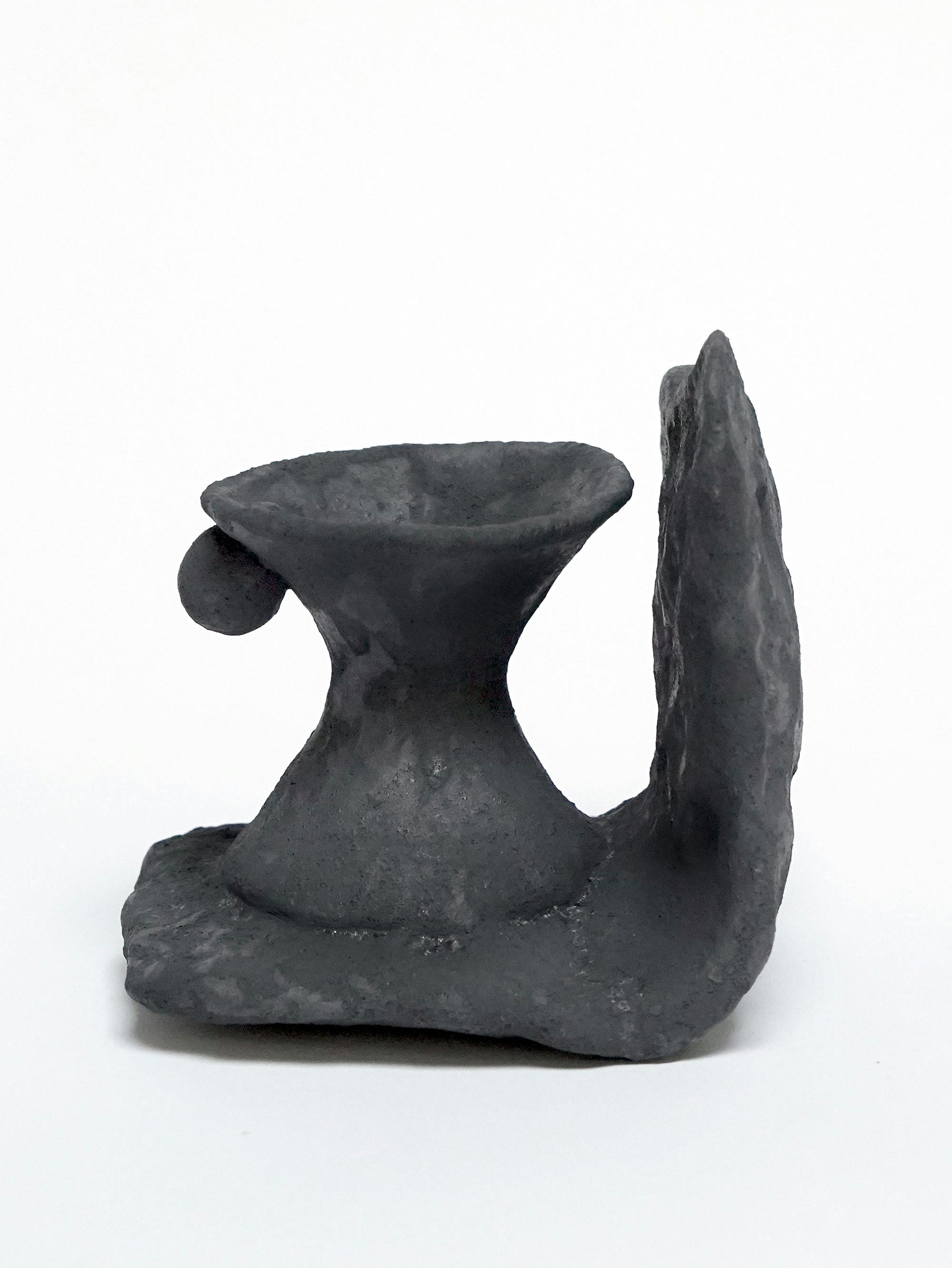Cup
Trevor King
- Ceramic, copper oxide glaze
- 2023
- 6" x 5" x 5"
"This piece is part of a series called 'Drearies.' Where the 'Notions' pieces are about diligently pointing back to their original drawings, the Drearies diverge, only using the original drawing as a jumping off point. Within these objects, I explore the familiarities between the shapes my grandfather proposed that I make and the shape-language that artists of my generation have inherited from our recent clay idols -- figures such as Ken Price, Toshiko Takeazu, Ron Nagle, Kirk Mangus, Lucie Rie, George Ohr, and Betty Woodman etc.
Where the Notions series uses the soft suggestive qualities of raw clay to appear unfinished, the Drearies are finished in a cosmic molten charcoal black, harkening back to the initial pen ink lines that instigated this whole conversation, and generating an everlasting fossilized kind of feeling."
- Trevor King
The fourth image shows the original reference for this piece. Drawing by Roy Mellott. This purchase includes a signed and numbered copy of Notions, Trevor's monograph about this series.
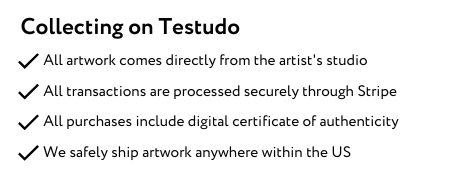
Please login to purchase.
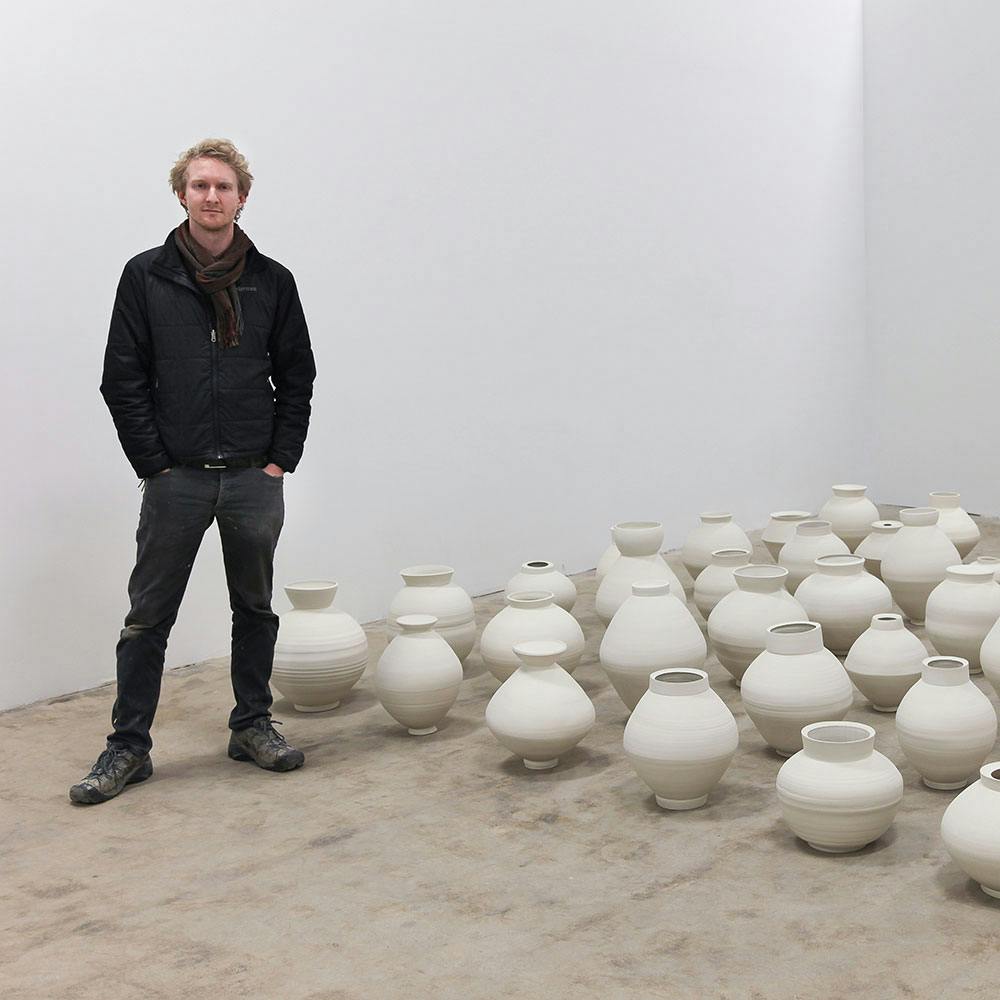
Trevor King
Lives and works in New York, NY
Mining the archives of both a historical and personal past, Trevor King explores how images and language can be translated into sculptural forms. Working primarily in ceramics, King concerns himself with these transformational qualities of sculpture, and often presents his work alongside archival videos, interviews, and even sketches by his grandfather. His resultant sculptures have a rough, raw quality with the process of their making intrinsically recorded on their surfaces as if challenging the very notion of utility and beauty. King ultimately reveals the relationships and interconnectedness between objects and history.
Heavily influenced by his childhood growing up in Western Pennsylvania, King initially turned to pottery because of its unique nonhierarchical place in art history—pottery bridging a divide between use and aesthetic pleasure. Throughout his work are hints of a post-industrial landscape, material awareness, as well as an interest in the democratization of art. King recognized how ceramics, both as vessels and art objects, are vital to our cultural history and used by art historians to add texture to our knowledge of the past. Thus, King approaches his own work with a keen sense of how these objects hold memories, capture the passing time, and specificity of place. King seeks to reveal the interrelations between objects and history.
